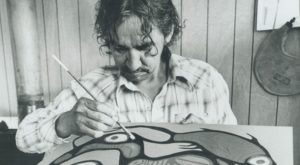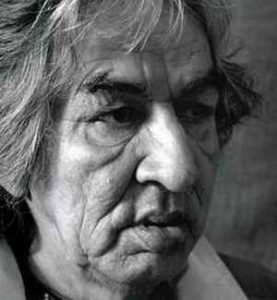
1932 - 2007
Norval Morrisseau
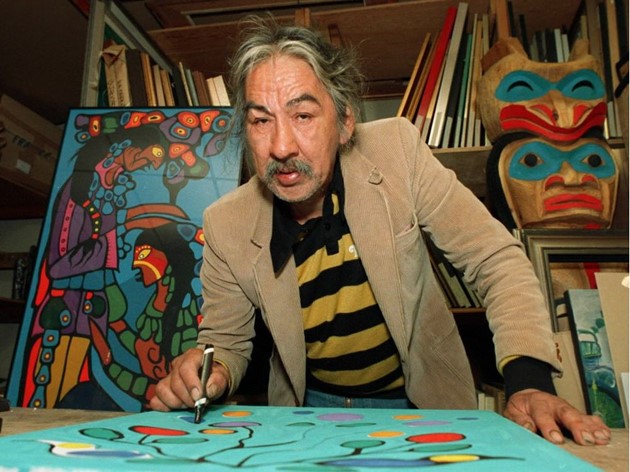
description
A Canadian self-taught artist of Indian origin, the founder of Woodland School (Woodland or forest school).
The most original and famous artist of his country. Norval Morrisseau was the first to depict ancient myths and legends on canvases transmitted by the oral tradition of the Ojibwa tribe. The naive artist is considered the creator of the Woodland artistic style. In 1989, he became the only Canadian artist invited to participate in the Earth Wizards exhibition at the Paris Museum of Modern Art. His personal exhibitions were frequently held by the famous US galleries. The artist was awarded an honorary degree at the Royal Academy of Arts of his country and the highest civil honor – a membership in the Order of Canada, and also received the highest award of the Assembly of First Nations – The Eagle Feather. His works are bought by the most prestigious museums around the world.
Key ideas:
– Having visited the Paris exhibition of the Canadian self-taught artist, Marc Chagall compared him to Picasso himself. Norval Morisseau himself in his youth had little faith that proud and intelligent gentlemen would purchase his works or even organize his shows at museums. In his book “Legends of my people – the great Ojibways”, he stated that he was a natural artist and that his main task was to draw the stories and legends he had heard in order to make them the property of all who live on earth.
– The myths told by him are simple and sacred in their universal human value. In the painting “The Great Eagle”, the interdependence of all life cycles is shown, while “Life on the pond” interprets individual episodes, sometimes bizarre. “The Branch of Life” tells about youth, while the painting “Mother Earth” tells about a peaceful day surrounded by the beauty of nature. “Inner strength” is about a shaman who calls the spirit of a huge bear, which has powers to protect someone’s marriage.
– A global philosophical problem is solved in the work “Nobody is alone”; indeed, who would mind the idea that all earthly creatures, the life of seas, land and sky are interconnected? The artist called it the “alphabet of nature” and grammar, where the symbols are plants, animals, birds, fish, earth and sky. His tribe knows all this; therefore, the world should not consider his people illiterate.
– Norval worked furiously and in any, sometimes even inhuman conditions, managing to create more than 15,000 canvases in 43 years. He developed not only his own recognizable artistic language, but also his own technique. The plots that he knew or which he imagined constantly altered, as well as manner of their embodiment: the colors became brighter and began to finally shine like neon.
– In many his works, Morrisseau imitated the stained glass style that impressed him in the prison church. Christian motifs interpreted in his way (for example, “Indian Jesus Christ”) harmonized with the theme.
– N. Morrisseau gained international recognition for his innovative and bright, sometimes provocative style. His work evokes thoughts of childish simplicity and the desire to make the story festive. Being a gifted colorist, he combines stunning shades: in one picture, there can be a bright yellow and not less juicy purple color, while an element with a bright green “look” can appear on the “outskirts”.
1932
1938 - 1940
1950
1960
1962
1967 - 1970
1970
1976
1986
1990
2005 - 2007
2007
The birth of the artist
He studied at the Catholic boarding school
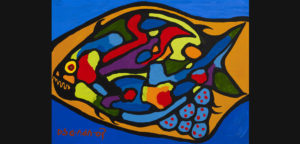
“Copper Thunderbird”
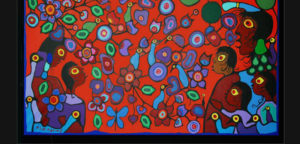
"Legends of the Great Ojibway"
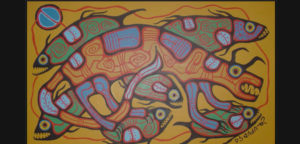
He got acquainted with art dealer J. Pollock
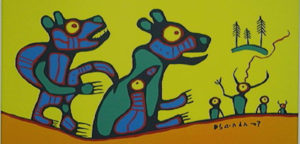
“You stole our homeland, culture, our souls...”
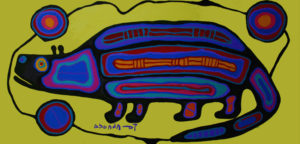
He was invited to join the Indian Group of Seven
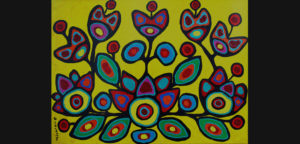
Became interested in the New Age movement
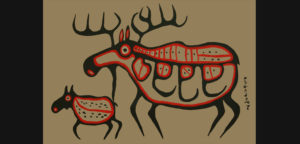
He became the Great Shaman of the Ojibweans
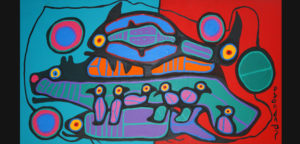
Participated in a number of exhibitions
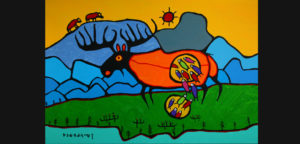
Joined the ranks of the Royal Society of Canada
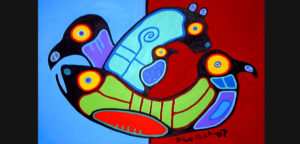
The death
